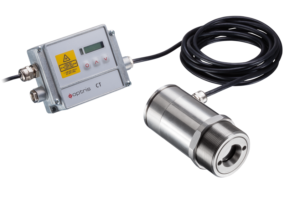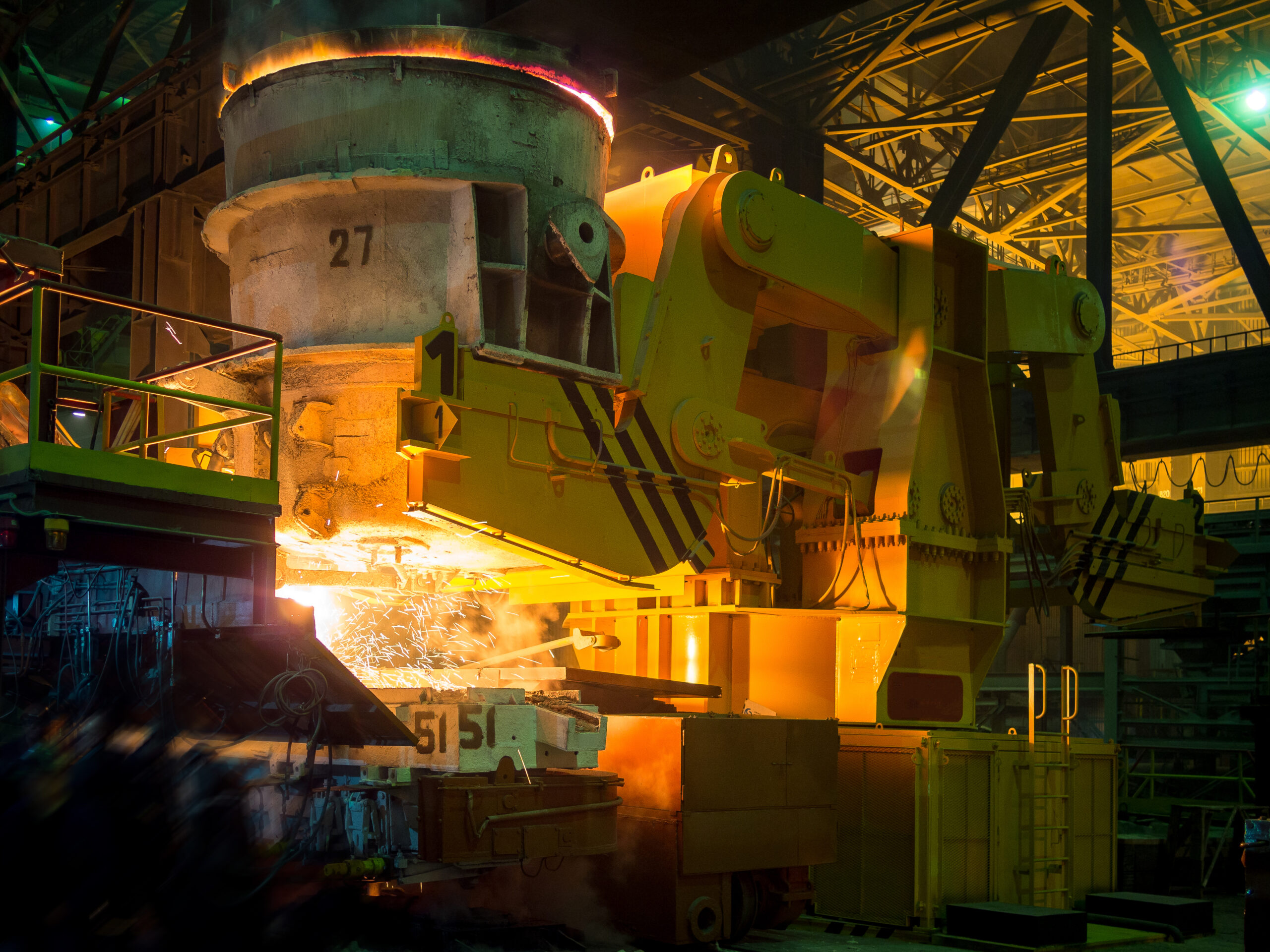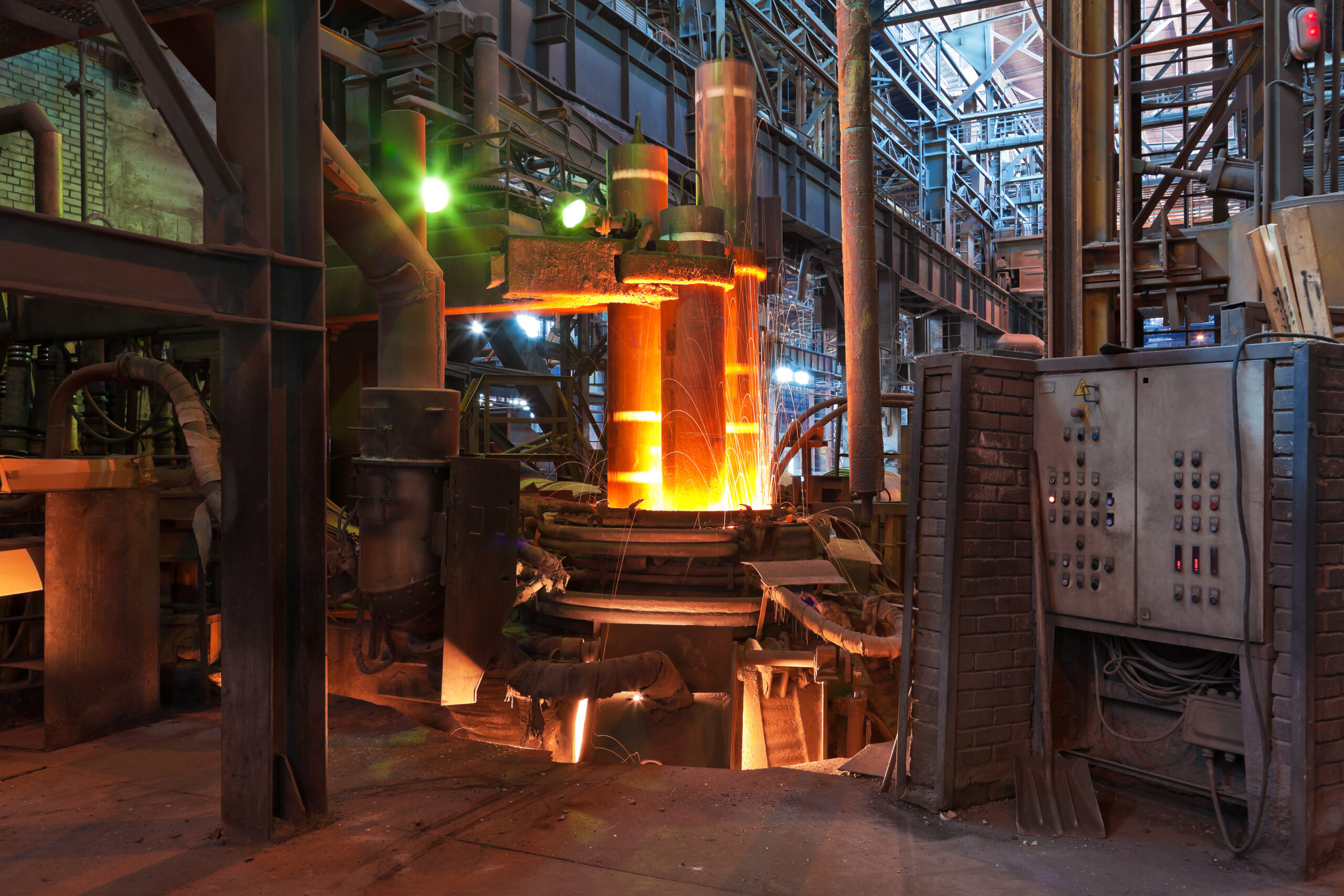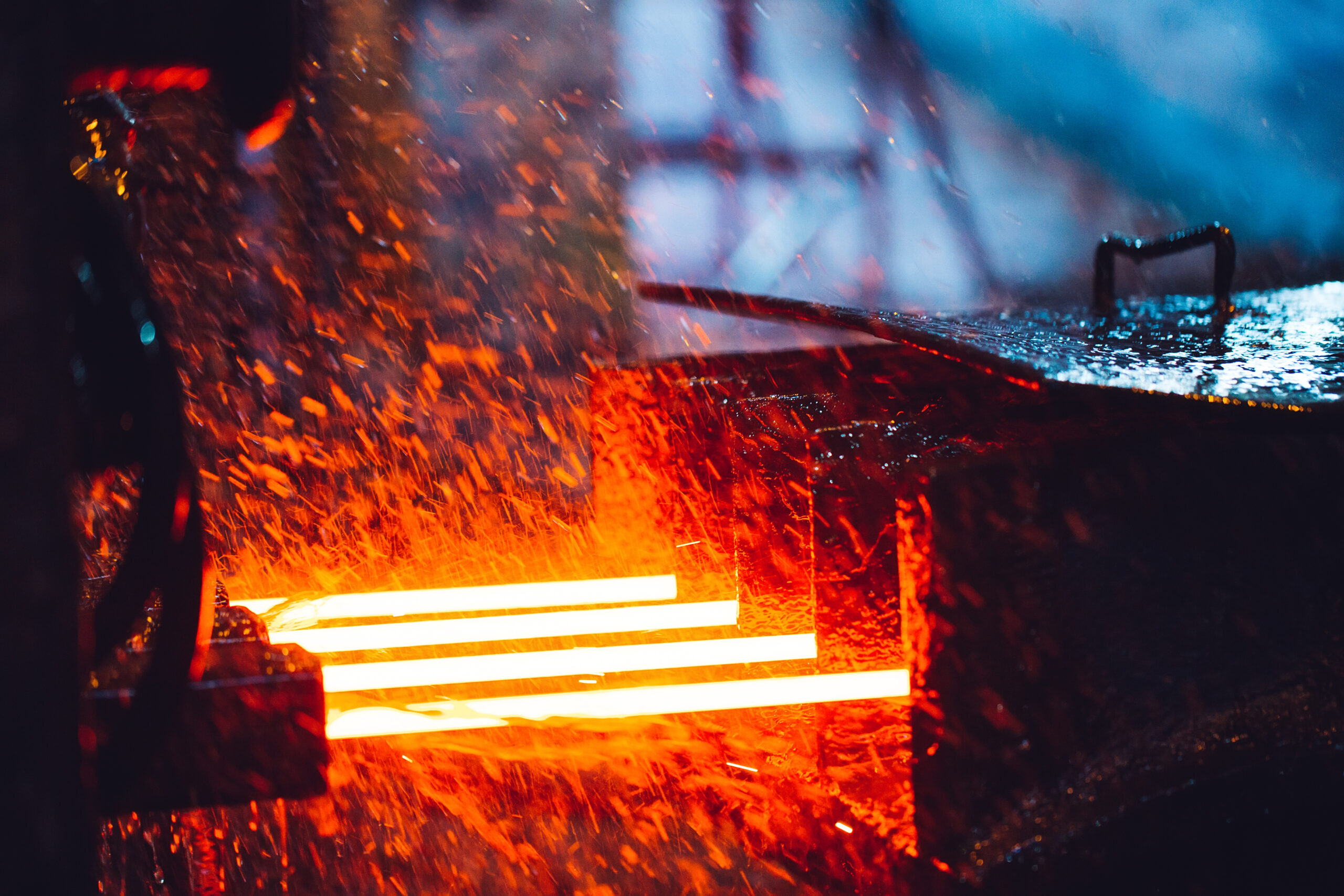Home Products Sensor Technology IR Temperature Sensors
Infrared Thermometers
Infrared thermometers, or pyrometers, are non-contact infrared sensors capable of single-point temperature measurements. These IR sensors find utility across a wide array of applications owing to their varied laser technologies and filters. In many cases, infrared sensors are sufficient for controlling entire processes through point temperature measurements, offering an unbeatable price-to-performance ratio compared to IR cameras. Despite differing in optics, electronics, technology, size, and housing, these IR sensors share a common signal-processing chain. Their compact nature enables easy integration into diverse application environments.
Infrared (IR) Cameras for Thermography
While traditional cameras capture visible light, infrared cameras operate in higher wavelength regions to measure surface temperature based on detected radiation. These IR cameras capture images that can be translated into temperature images, often represented using false color schemes. Thermal imaging cameras excel in identifying areas of warmth or coldness, making them invaluable for various applications:
- Analyzing dynamic thermal processes in product and process development.
- Stationary applications for continuous observation and control of thermal processes.
- Portable usage in maintenance for detecting thermal leaks, facilitated by user-friendly smartphone integration.
Stationary installations of USB infrared cameras offer galvanically separated process interfaces, enabling transmission of temperature information as 0/4-20 mA or 0-10 V signals. Additionally, these thermal imaging cameras support area-related emissivities and reference temperature measurements through voltage input, further enhancing their versatility.

Advanced High-Resolution Infrared Camera for Research & Development - PI 640I
1) Optimal Precision
2) Real-TimePerformance
3) Seamless Integration
Read More
2) Real-TimePerformance
3) Seamless Integration
Dynamic Short Wavelength Metal Temperature Camera - PI 1M
1) Precision Design
2) Rapid Response & real-time monitoring.
3) 450 °C to 1800 °C without sub-ranges.
Read More
2) Rapid Response & real-time monitoring.
3) 450 °C to 1800 °C without sub-ranges.
CSvision : Advanced Ratio Pyrometers for High-Temperature Measurement
1) Temperature Range: 250 °C to 3000 °C.
2) Switchable two-step brightness reduction
Read More
2) Switchable two-step brightness reduction
Advanced Dual Laser Infrared Thermometers - CSlaser/CTlaser
1) Dual Laser Sighting
2) Enhanced Alignment
3) Ideal for industrial and research environments
Read More
2) Enhanced Alignment
3) Ideal for industrial and research environments
Our Case Studies

Induction Heating
Accurate Temperature measurement in Induction Heating using Ratio Pyrometer
Accurate temperature even at recycled/oxidized billet.No EMC effect, hence minimized measurement errors.Compact size and Easy to install: No need of cooling arrangement.High temperature ( 315°C) sensing head with Fiber optics cable.
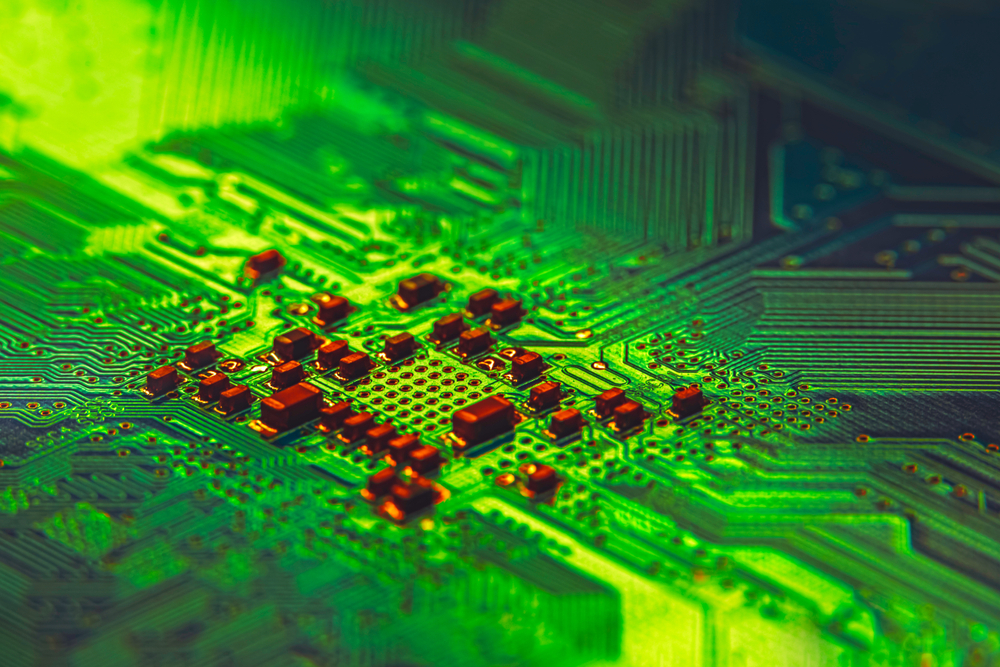
Research and Development
Temperature measurement for component inspection
In research and development, infrared (IR) technology is crucial for inspecting semiconductors, printed circuit boards (PCBs), and assemblies. The lifespan of semiconductor elements is directly linked to temperature, as a 10°C increase can lead to a 50% reduction in lifespan. Developers of electronic assemblies face the challenge of accommodating the thermal behaviour of circuit boards and assemblies.

Glass
Temperature Monitoring during Container Glass Gob cutting
Infrared camera monitors temperature during container glass gob cutting. Production quality was improved and reject ratio was minimized. Earlier issue of cracks in container glass was resolved and it maintained consistent thickness throughout the container glass.
Compact infrared thermal imaging camera was used for the continuous temperature monitoring of each zone. Alarm generated if zone temperature exceeds set points. Hot spot detector scans the entire critical asset and easily identifies the spot with maximum refractory erosion. Home Case Studies Online condition-based Monitoring / Predictive Maintenance of LHF Online condition-based Monitoring / Predictive Maintenance of LHF Home Case Studies Pilger mill in tube rolling mills – hot and cold pipe detection Pilger mill in tube rolling mills – hot and cold pipe detection Increased efficiency: Ladle lifetime improvement with early detection allowing for selective repairs as opposed to full lining Improve safety level: Prevent breakouts and reduce risk of damage to personnel & plant equipment Avoid unscheduled downtime: Avoids costly machinery damage and days to clean-up Challenges The customer faced the challenge of measuring the temperature of ladle shell when the hot metal is inside so that any punctures can be identified in time Solution Compact infrared thermal imaging camera provided the ideal solution Zones Monitoring: Each zone temperature was continuously monitored.If zone temperature exceeded above 300⁰C, an alarm was generated. Hot Spot Detection: Hot spot detector scanned the entire critical asset and easily identified the spot with maximum refractory erosion. Predictive Maintenance: Real time system running 365 / 24/ 7 days, warning of excessive shell temperature from refractory degradation. Products and Accessories Thermal Imaging Camera Water Cooling Jacket Air Purge Unit Case Study Number TP3 Challenge The increasing flexibility of production lines requires a high adaptability of sensors. Continually changing object geometries, different temperatures and very high radiation or surrounding temperatures are no rarity. In a pilger mill those rough conditions can be found, among others in the production of seemless steel pipes. The raw steel blocks, each weighing a few tons are heated up first in a round oven at a temperature of 1300 °C. After descaling of the surface, the steel block is prepunched in a hole press with a strength from a converted 2000 t. In the next sloping rolling mill the growing pipe rotates between two rollers that are positioned at an angle to each other. The punching is widened to the size of the mandrel diameter. Previous solution / Competitor product N/A Solution The sensor that was installed at this application is the HMD OKA 2038.38 G with tube OL 19. The signal of the infrared sensors controls the movement of centering device and abutment. The point of view is restricted by the tube and prevents disturbances by steam in the cooling phase. An optimum adaptation to the operating conditions is given due to the adjustable response temperature. The HMD with self-learning response temperature (Auto-Teach function) is suited to continually changing conditions. The compact sensor with a stainless steel housing can withstand surrounding temperatures of up to 75° C. The use of a cooling jacket raises this up to 200° C. Alternatively sensors with fibre optic cables are available which permit an application at ambient temperatures up to 600° C without cooling. Customer Benefits Maintenance-free High temperature stability Recognition of hot objects at big distances Self adjustment with Auto-Teach or step switch for the response temperature Product Part number OKA 2038.38 G Brand Proxitron Accessories Piros swivel stand HM2 Tube OL 19 Pilot light unit (for alignment) DAK 308 + OL 26 Different cable lengths (e.g. 15 m) Customer Testimonial compared to previous solution or competition Case Studies Other Applications in Steel Making View All Sample case study title lorem ipsum here Short description of the problem solved, maybe include the client name. READ MORE Sample case study title lorem ipsum here Short description of the problem solved, maybe include the client name. READ MORE Sample case study title lorem ipsum here Short description of the problem solved, maybe include the client name. READ MORE
Online Condition Based Monitoring of EAF / Converter for Preventative Maintenance
Compact IR thermal imaging camera was installed to provide a temperature map of the bottom shell. The cameral scans the full bottom of the shell giving options to define multiple areas /ROI to get 4-20mA output. Software automatically finds hot spots enable timely preventative maintenance. Home Case Studies Online Condition based Monitoring of EAF for Preventative Maintenance Online Condition based Monitoring of EAF for Preventative Maintenance Home Case Studies Pilger mill in tube rolling mills – hot and cold pipe detection Pilger mill in tube rolling mills – hot and cold pipe detection No wiring: Non-contact temperature measurement. Scans full bottom shell. Multiple area /ROI possible to define to get 4-20mA output Intuitive identification of hot spot. Software automatically finds hot spots Challenges High temperatures cause wires to melt leading to loss of thermocouple readings. Plant operators need to wait until the next planned shutdown to carry out change in wires and undertake repairs. Furthermore, thermocouples only provide point temperature readings and therefore it becomes difficult to identify where the hot spots are being developed. Point measurement thermocouples: Average only 9 point measurements possible with thermocouples. High maintenance cost: Not possible to change wiring while furnace in operations Solution Compact IR thermal imaging camera was installed to provide a temperature map of the complete bottom shell Products and Accessories Thermal Imaging Camera Water Cooling Jacket Air Purge Unit Case Study Number TP3 Challenge The increasing flexibility of production lines requires a high adaptability of sensors. Continually changing object geometries, different temperatures and very high radiation or surrounding temperatures are no rarity. In a pilger mill those rough conditions can be found, among others in the production of seemless steel pipes. The raw steel blocks, each weighing a few tons are heated up first in a round oven at a temperature of 1300 °C. After descaling of the surface, the steel block is prepunched in a hole press with a strength from a converted 2000 t. In the next sloping rolling mill the growing pipe rotates between two rollers that are positioned at an angle to each other. The punching is widened to the size of the mandrel diameter. Previous solution / Competitor product N/A Solution The sensor that was installed at this application is the HMD OKA 2038.38 G with tube OL 19. The signal of the infrared sensors controls the movement of centering device and abutment. The point of view is restricted by the tube and prevents disturbances by steam in the cooling phase. An optimum adaptation to the operating conditions is given due to the adjustable response temperature. The HMD with self-learning response temperature (Auto-Teach function) is suited to continually changing conditions. The compact sensor with a stainless steel housing can withstand surrounding temperatures of up to 75° C. The use of a cooling jacket raises this up to 200° C. Alternatively sensors with fibre optic cables are available which permit an application at ambient temperatures up to 600° C without cooling. Customer Benefits Maintenance-free High temperature stability Recognition of hot objects at big distances Self adjustment with Auto-Teach or step switch for the response temperature Product Part number OKA 2038.38 G Brand Proxitron Accessories Piros swivel stand HM2 Tube OL 19 Pilot light unit (for alignment) DAK 308 + OL 26 Different cable lengths (e.g. 15 m) Customer Testimonial compared to previous solution or competition Case Studies Other applications in Steel Making Sample case study title lorem ipsum here Short description of the problem solved, maybe include the client name. READ MORE Sample case study title lorem ipsum here Short description of the problem solved, maybe include the client name. READ MORE Sample case study title lorem ipsum here Short description of the problem solved, maybe include the client name. READ MORE View All
WRM:4-Strand Temperature & Detection with single thermal camera
Home Case Studies WRM: 4-Strand Temperature & Detection with single thermal camera WRM: 4-Strand Temperature Measurement & Detection with Thermal Imaging Camera High speed measurement: Infrared Camera at very fast speed of 1000hz frame rate Multiple strand measurement: One Thermal camera for all 4 strands Dual use: Temperature measurement and Hot Metal Detection Challenges The customer was facing the challenge of not being able to mount 4 HMDs in a single row. Additionally, the cost was prohibitive as one sensor was required for each strand of the hot wire. Solution One thermal imaging camera was used for the detection of all four strands This made it cost effective and allowed for ease of maintenance and no alignment issue Thermal Camera features included 4nos of Analog 4-20mA Excel data logging 315 C of ambient temperature 450-1800C 768*428 pixels1µm wavelength 1Khz capture rate Products and Accessories Thermal Imaging Camera Water Cooling Jacket for IR Camera Air Purge Unit Case Study Number TP3 Challenge The increasing flexibility of production lines requires a high adaptability of sensors. Continually changing object geometries, different temperatures and very high radiation or surrounding temperatures are no rarity. In a pilger mill those rough conditions can be found, among others in the production of seemless steel pipes. The raw steel blocks, each weighing a few tons are heated up first in a round oven at a temperature of 1300 °C. After descaling of the surface, the steel block is prepunched in a hole press with a strength from a converted 2000 t. In the next sloping rolling mill the growing pipe rotates between two rollers that are positioned at an angle to each other. The punching is widened to the size of the mandrel diameter. Previous solution / Competitor product N/A Solution The sensor that was installed at this application is the HMD OKA 2038.38 G with tube OL 19. The signal of the infrared sensors controls the movement of centering device and abutment. The point of view is restricted by the tube and prevents disturbances by steam in the cooling phase. An optimum adaptation to the operating conditions is given due to the adjustable response temperature. The HMD with self-learning response temperature (Auto-Teach function) is suited to continually changing conditions. The compact sensor with a stainless steel housing can withstand surrounding temperatures of up to 75° C. The use of a cooling jacket raises this up to 200° C. Alternatively sensors with fibre optic cables are available which permit an application at ambient temperatures up to 600° C without cooling. Customer Benefits Maintenance-free High temperature stability Recognition of hot objects at big distances Self adjustment with Auto-Teach or step switch for the response temperature Product Part number OKA 2038.38 G Brand Proxitron Accessories Piros swivel stand HM2 Tube OL 19 Pilot light unit (for alignment) DAK 308 + OL 26 Different cable lengths (e.g. 15 m) Customer Testimonial compared to previous solution or competition Case Studies Other Solutions in Hot Rolling Mills Sample case study title lorem ipsum here Short description of the problem solved, maybe include the client name. READ MORE Sample case study title lorem ipsum here Short description of the problem solved, maybe include the client name. READ MORE Sample case study title lorem ipsum here Short description of the problem solved, maybe include the client name. READ MORE View All Home Case Studies WRM: 4-Strand Temperature & Detection with single thermal camera
Infrared Temperature Sensors
Non-contact temperature measurement through infrared sensors stands as a qualified method for controlling, monitoring, and managing process temperatures, as well as for preventive maintenance of machinery and facilities. These IR sensors offer several advantages:
- Temperature measurements of moving or overheated objects, even in hazardous environments.
- Very rapid response and exposure times.
- Non-invasive measurement, ensuring no influence on the object being measured.
- Non-destructive measurement method.
- Durability of measurement points, with no mechanical wear. Non-contact infrared sensors are indispensable tools utilized across numerous industrial applications.
Metal & Mining
Accurately monitor temperature and detect hot spots using infrared measurement devices that are especially suited for high temperatures and rough environment of rolling mills. Wide range of applications involving temperature measurement for process optimisation along the rolling train and for condition based monitoring for the early detection of wear.
Read More
Mining & Material Handling
Highly robust encoder solutions for the harsh operating environment of raw material handling. Heavy duty encoders for various applications in underground and open-pit mining operations – solutions for bucket wheel or bucket chain excavators, stackers/reclaimers, conveyor belt systems, tippers or giant bucket wheel excavators.
Read More
Process Industry
IR non-contact temperature monitoring sensors for different stages of plastics manufacturing process – injection moulding , thermoforming, injection blow etc.
Read More
Railways
Provide the railway industry with latest sensor technology and components for measuring temperature and setting and indicating speed.
Non contact infrared measurement solutions for high precision temperature of axle.
Redundant potentiometric or coded angular position transmitters for cruise control and brake control
Driver’s cab signal indicating devices for the display of theoretical speed and actual speed.
Read More
R&D
Infrared cameras serve as invaluable tools in the development, testing, process monitoring. In electronics research, thermal imaging offers high resolutions and enable precise measurement of temperatures and temperature distributions, even in the smallest components.
Short-wave infrared cameras are particularly favored for temperature monitoring in additive manufacturing.
Read More

